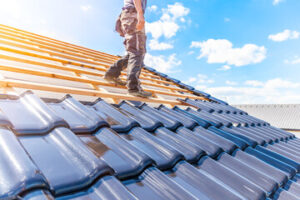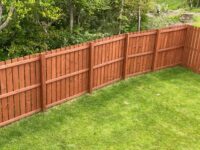The Long-Term Benefits of a Well-Maintained Roof
The roof is the physical structure that covers and protects a building from rain, wind, snow, sunlight, and other weather elements. Roofing Ormond Beach is the process of installing, repairing, or replacing this outer layer.
Popular roofing materials include asphalt shingles, tile, and wood shakes or shingles. Each offers a unique appearance and different levels of durability.
Roofing is one of the most essential elements to any building. It protects against wind, rain, snow, sunlight and other weather conditions that may damage a structure or cause discomfort for its inhabitants. Throughout the ages, people have been designing, installing and repairing roofs in response to cultural and environmental changes.
Taking shelter from the elements was among humanity’s first major achievements, and the development of roofs reflects the evolution of human civilization. Initially, early thatched roofs were constructed with whatever material was readily available to provide protection from the sun and weather. Later, as people began to travel and settle in different areas, the need for a stable and reliable roof became more important, leading to innovations in construction techniques and materials.
The earliest thatched roofs were made with layers of dried vegetation such as straw, reed, or rushes. These were easy to build and were effective in insulating against both heat and cold. However, they were also quite fragile, making them susceptible to storms and fire.
As civilization progressed, thatched roofs were replaced by more durable and stable options such as clay tile or slate. These were more resistant to fire, and they were able to withstand the weight of heavy snow or rainfall.
By the 19th century, people were treating wood shingles to help protect them from moisture and sun exposure. Pine pitch, linseed oil and brick dust were used to create a color that enhanced the appearance of roofs and protected them from premature wear.
In addition to increasing the lifespan of roofing, these treatments allowed for a more efficient structural design by providing a stronger support for the weight of the roof. In 1837, galvanizing with zinc was developed to protect base metals from rust and corrosion. The process boosted the popularity of corrugated iron for roofing purposes. In the 1860s, rolling mills began to produce tin-plate iron that was embossed for architectural style purposes. This roofing material was widely used for railroad sheds, warehouses and post offices, and it was eventually introduced to private homes.
Materials
Roofing materials vary significantly, and each type has its own advantages and disadvantages. Choosing the right material for your home can make all the difference in your comfort and safety, as well as your energy costs. Some roofing materials are also easier to install than others, which can affect your overall project cost. A variety of aesthetic features are available, too, allowing you to customize the look of your home.
Asphalt shingles are the classic roofing material seen on many homes today. They are affordable and easy to install, making them a popular choice for homeowners. In addition, they are highly versatile and can be customized with a variety of color options. Asphalt shingles are also resistant to UV radiation, punctures, and chemical exposure. They can be installed over most existing roofs, and they are also easy to replace or repair if necessary.
Concrete tiles are another natural roofing option. They are molded and fired in kilns for durability, and they can be designed to imitate the appearance of other roofing materials such as slate and clay tile. Concrete tile is a good choice for areas with hot climates, as it reflects sunlight rather than absorbing it. However, it can be extremely heavy, which can put stress on your home’s structure and require extensive support beams.
Other roofing materials include wood shingles, shakes, and planks, metal shingles and panels, and built-up roofs. Wood shingles and shakes are typically made from hardwoods, though composite wood materials are sometimes used as well. These types of shingles are durable and can last up to 30 years. Metal roofing is a more modern choice. It is lightweight and offers resistance to corrosion, punctures, and other damage. It is also effective in reducing cooling costs thanks to its reflective properties.
Other roofing materials include corrugated galvanized iron, a flat-seam metal with or without soldered seams that is often used for sheds; and joists and planks, which are wood or steel boards with a prefabricated shape that connect to joists using exposed fasteners. Prefabricated decks are also an option.
Installation
The roof is a structure that protects people and property from the elements. It consists of the framework, decking and outermost layer of materials like shingles, tiles or metal panels. There are many different types of roofing and each offers its own set of benefits and maintenance requirements.
After the inspection, our project manager will present you with an estimate and contract. They will review all of the work that needs to be done, how it would affect your insurance and how much the total cost is.
During this time, you may also want to discuss any new vents or air holes that you would like to install for increased attic ventilation and energy efficiency. They can also install new drip edges and valley flashing at this time, as well as ice and water shield along the eaves. If your roof has a chimney or wood stove pipes, you will need to add roof sheathing and flashing around these as well. Finally, if you need ridge vents they will be installed during this time as well.
Maintenance
The roof is an important part of any building and it is essential that it is protected from environmental elements. Routine maintenance procedures prevent deterioration which results in costly repairs and interior damage to building contents. Untreated deterioration may also result in warranty cancellation.
Regular inspections are required to identify and correct problems before they become severe. These procedures should include visual inspections of all roof surfaces, including walkways and access areas. In addition, the drainage system should be inspected regularly. Debris should be removed from drains, scuppers and gutters to avoid clogging and reduce detrimental structural loading. Drainage lines should be tested by simulating rainfall to identify clogged points or inefficient drainage systems.
Walkways, stairways and ramps should be inspected for structural soundness, surface deterioration or obstructions. Especially in high traffic areas where the walkways are heavily used, the removal of accumulated debris is recommended to minimize degradation and to reduce the risk of falls. Any stairways or ramps that are not structurally sound should be corrected as soon as possible to eliminate any potential hazards for maintenance personnel who might have to go to the roof to perform repair work.
The exterior surface of a roof is the main barrier to rain and sun, which must be kept clear to prevent water stains or other forms of deterioration. The surface should be checked for cracks and any deterioration that could be caused by moss, algae or other growth. In some situations, the use of a pressure washer or chemicals is recommended to remove buildup and prevent the formation of mold and fungus.
In addition to the above, a periodic survey should be conducted to look for any holes or dents that might allow insects or unwelcome wildlife into the structure through the rooftop. During the summer, insects that are seeking cooler temperatures or shelter from the hot sunlight may enter through these holes. The rooftop should be surveyed periodically to remove any fallen tree limbs and to prevent debris from accumulating in drains and other parts of the roofing system.






